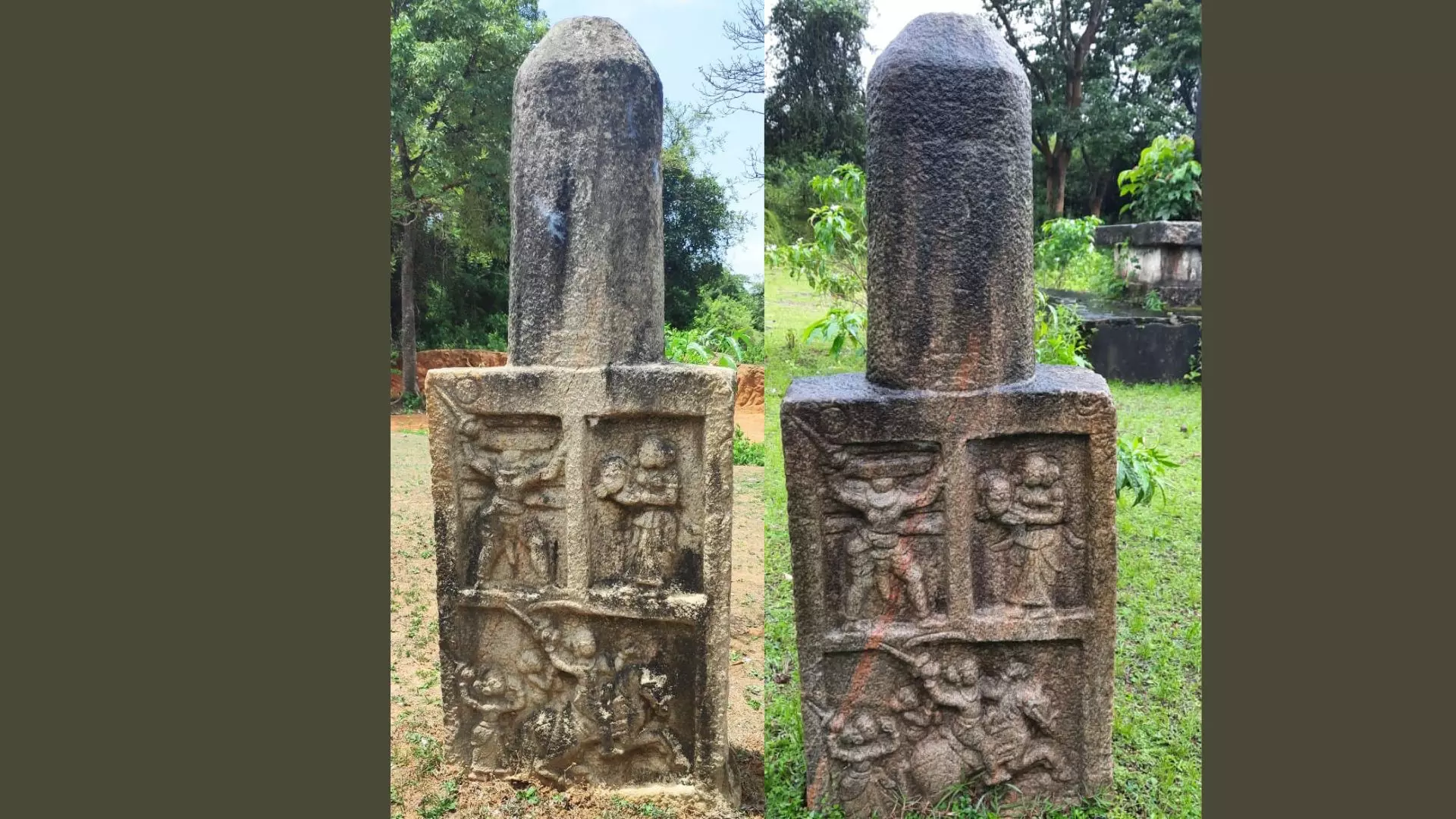Rare Garuda Pillar Unearthed in Araga's Veerabhadra Temple
A unique Garuda pillar from the Vijayanagara era, depicting ancient self-sacrifice, was discovered at Veerabhadra Temple, Ballari

"The pillar, dating back to the Vijayanagara period, offers a rare glimpse into the Garuda custom, where close aides of kings, known as Velavali or Garuda, would engage in self-sacrifice. While such acts are commonly depicted through hero stones, the discovery of this memorial in the form of a pillar is an exceptional find." (Image: DC)
Ballari: A historically significant discovery has been made at the Veerabhadra Temple premises in Araga, shedding light on ancient self-sacrifice practices in Karnataka.
During a field study, Dr R Shejeshwara, Director, Karnataka State Department of Archaeology Museums and Heritage, Kamalapura-Hampi, uncovered a unique 2-meter-long granite pillar depicting a "Garuda-custom decapitating (self-sacrifice) memorial."
The discovery sheds light on the ancient practice of self-sacrifice in Karnataka.
"The pillar, dating back to the Vijayanagara period, offers a rare glimpse into the Garuda custom, where close aides of kings, known as Velavali or Garuda, would engage in self-sacrifice. While such acts are commonly depicted through hero stones, the discovery of this memorial in the form of a pillar is an exceptional find," Dr R Shejeshwara told Deccan Chronicle.
The sculpture consists of panels, vividly portraying a warrior figure (Garuda or Velevali - a close aide of the King). In the lower panel, a warrior (Garuda) is seen seated on a horse holding a sword, with an attendant standing behind him, holding an umbrella. The presence of the attendant suggests that the figure was of royal importance. A woman is depicted standing behind the warrior, also holding a sword.
In another panel, the warrior is shown standing in a heroic pose after severing the head. The severed head is placed on a tray, and the warrior holds it in his hand, symbolizing a ritualistic act of self-sacrifice. A woman is also depicted beside him, holding the severed head.
"Interestingly this act is depicted on a pillar that resembles a linga. However, the top of the pillar is flat. The Garuda-custom decapitation is a rare example of self-sacrifice practices that were prevalent in ancient Karnataka. Self-sacrifice, or atma balidana, held a place of great importance in Hindu belief, considered distinct from suicide," he said.
"Karnataka is home to many memorial inscriptions and sculptures depicting different forms of self-sacrifice. However, Garuda-style decapitation, as discovered in Araga, is particularly rare. This unique sculpture can be classified as a Garuda pillar. So far, only two other Garuda pillars have been discovered in Karnataka, in Halebidu and Agrahara Bachihalli, both from the Hoysala period," he said.
The sculpture found in Araga lacks inscriptions but resembles the pillar found in Halebidu.
"Its base is square-shaped and adorned with intricate carvings. The top of the pillar, which mimics a lingam, is flat, making it difficult to definitively identify it as a Shiva lingam. The similarity between the pillars in Halebidu and Arag suggests that such Garuda pillars were commonly erected as part of the Garuda custom, which spanned both the Hoysala and Vijayanagara periods," he narrated.
Dr R Shejeshwar expressed his gratitude to Dr Devarajaswamy, Dr Jagadish, TM Keshav, Dr Gangabike Govardhan, Ramesh Hirejamburu, Shashidhar, and Mohan for their contributions to the study and understanding of this rare Garuda-custom memorial sculpture.
( Source : Deccan Chronicle )
Next Story

